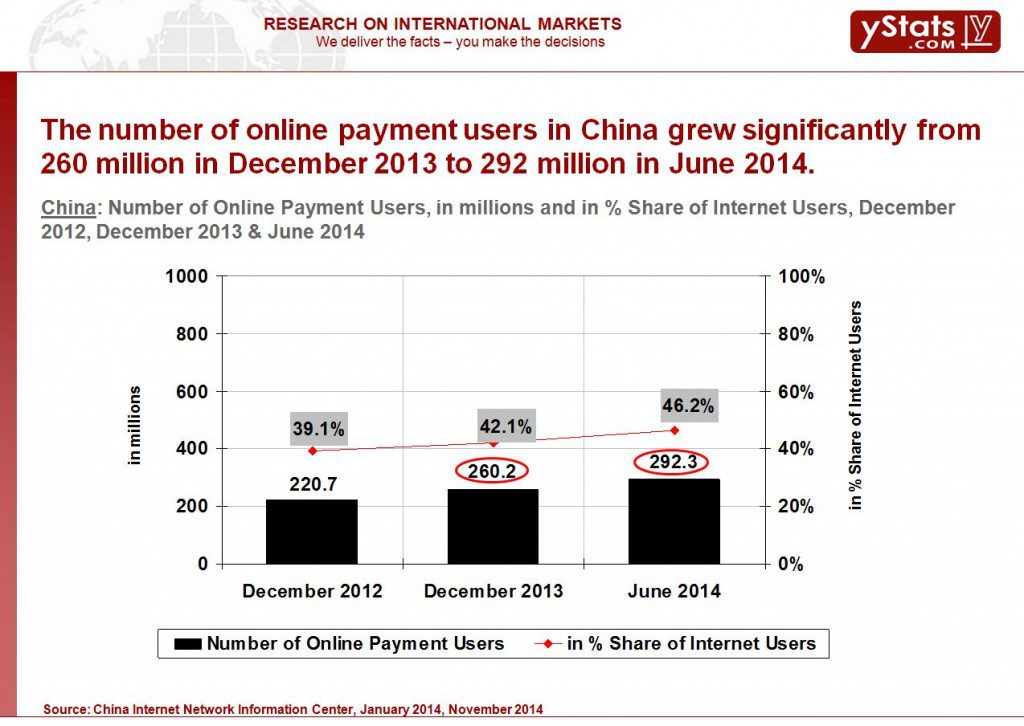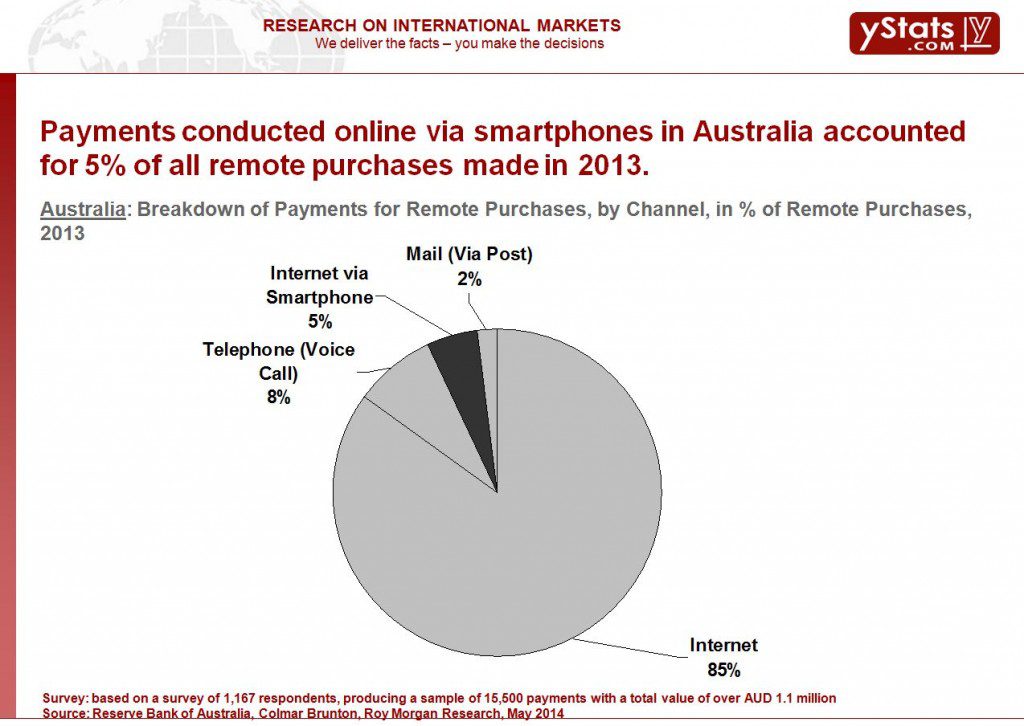A new publication from Hamburg-based secondary research organization yStats.com, “Asia-Pacific Online Payment Methods: Second Half 2014” reports that the online payment market is growing apace with global B2C E-Commerce. The Asia-Pacific region is expected to be the largest online retail market within a few years, so the growth of online payments there is of particular interest.
In the region’s largest market, China, online and mobile payments are dominated by local third party payment providers, such as Alipay and Tencent. In November 2014, Alibaba announced that it is planning to spin off its financial services arm controlling Alipay into a separate public company, with the expectation of a market value of no less than USD 25 billion. Meanwhile, other third-party payment providers, such as 99Bill, Lakala Payment and China PnR started expanding their mobile and online payment offerings to in-store payments. The number of online payment users in China neared 300 million in June 2014, while mobile payment users topped 200 million.

One of the region’s mobile payment pioneers, Japan has seen new mobile payment pathways launched this year. Korea-based mobile messaging service Line introduced Line Pay in Japan, while Rakuten Bank, a division E-Commerce leader Rakuten, launched payment transfers through Facebook. To support the growth of online payment methods, the Japanese adopted a plan to enhance the payment system, including improvement of real-time bank transfers. The payment methods most used by online shoppers in Japan are credit card and convenience store payments.
In South Korea, last month the government agency regulating finances relaxed its requirement to use the specific software for online payment security, allowing companies to choose any security software. Other innovations in payments include the recent launch of mobile payment service KakaoTalk, by Daum Kakao, operator of the leading mobile messaging platform. Also, phone maker Samsung cooperated with payment processor Yelopay to introduce a Samsung Wallet. The value of mobile payments in the first half of this year grew by more than two times to several EUR billion.
In Australia, online shopping remains the leading purpose for using credit cards. Mobile payments are on the rise, as the share of payments made via smartphone accounted for a high one-digit share of all remote purchases. Moreover, payments with PayPal are gaining popularity and already account for a small one-digit share of all consumer payments in the country.
Cash on delivery is still the payment method most preferred by online shoppers in India in 2014. The same is true for Pakistan, where credit card payment is offered by only three out of seven major shopping sites. Also in Vietnam cash on delivery and bank transfer are the most popular payment options in B2C E-Commerce. Though electronic payment penetrations lags in these nations, the potential for growth is promising.



